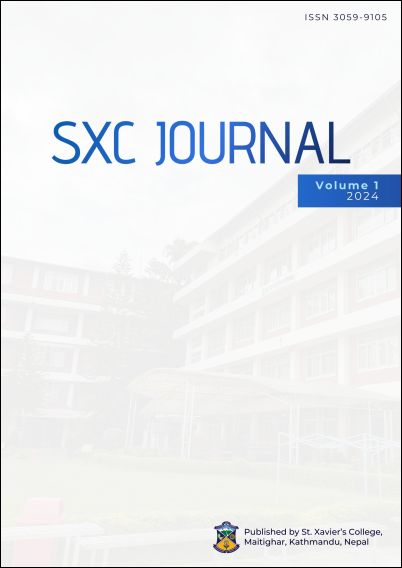Regression Model in Social Science Research: The Issue of Multicollinearity, Detection Method, and Solution in SPSS
DOI:
https://doi.org/10.3126/sxcj.v1i1.70871Keywords:
Regression, multicollinearity, tolerance, VIF, condition index, variation proportionAbstract
One of the objectives of social science researchers in an inferential test is to build a reliable regression model. Multi-linear regression aims to find or predict the effect of predictor variables on predicted variables. However, when there is a high linear correlation between predictor variables in multi-linear regression, the predictor variables in the model cannot accurately define their impact on predicted variables. This statistical condition is called multicollinearity. Without testing and detecting multicollinearity and its precise treatment, the regression model can create difficulties in defining the impact of individual predictor variables on the predicted variable, leading to a faulty interpretation of the impact on the whole model. In this study, 36 primary-level teachers were selected randomly as the respondents. The respondents’ data included their tentative salary, age, years of education, academic percentage in their final degree, and years of service. In the first round, the Karl Pearson correlation test is conducted among four independent variables: tentative current salary, age of respondent teachers, years of education completed, academic percentage in the final degree, and years of service s/he is involved in. SPSS version 25 is applied to find a correlation matrix between predictor variables, a matrix scatter plot, and linear regression with a collinearity diagnostic test. After finding a strong correlation between two variables, a collinearity diagnostic test is performed to locate and confirm the multicollinearity issue between the predictor variables. Once multicollinearity is confirmed, precise treatment is provided to solve the issue. The study found multicollinearity issues in two predictor variables; thus, further solutions were explained.
Downloads
Downloads
Published
How to Cite
Issue
Section
License
Copyright (c) 2024 The Author(s)

This work is licensed under a Creative Commons Attribution 4.0 International License.
This license enables reusers to distribute, remix, adapt, and build upon the material in any medium or format, so long as attribution is given to the creator. The license allows for commercial use.




